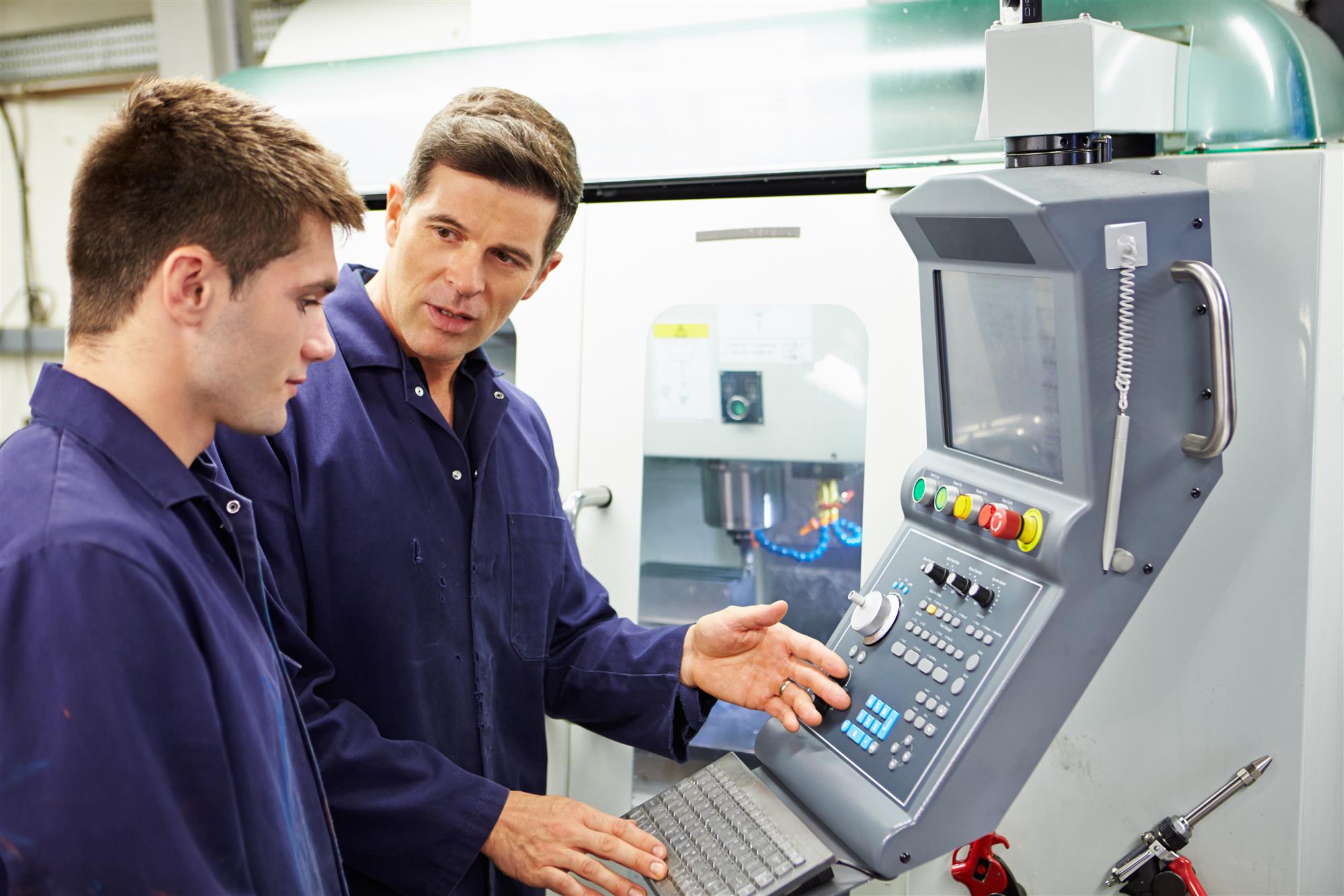Women in Metalworking Machinery Manufacturing
When you think about metalworking machinery manufacturing, you might picture this industry as being a “males-only” industry. However, you would be sadly mistaken. While, indeed, there are more men that work in this particular industrial segment, women still make up a decent percentage of workers.
In fact, women started getting into manufacturing back during World War II (WWII) when men were being drafted for the war effort. Women started taking over many of the positions previously held by men. Globally, there was a significant increase in the number of women working in manufacturing from the period between 1940 through 1943.
Even Queen Elizabeth II did her part. She joined the UK’s armed forces and worked as a mechanic repairing military vehicles and was also a military truck driver! Here in the United States, “Rosie the Riveter” became an iconic image that promoted women’s roles in manufacturing during WWII.
Many women worked in factories building airplanes, military vehicles, and automobiles. Other women worked in machine shops as machinists producing related parts and components. While the dominance they established during WWII declined after the war, many women continued to work in manufacturing.
Today, women still make up around one-third of the workers in manufacturing. In fact, they have held steady at this rate since the 1970s, with little change. Some women have even started their own metal fabrication and machine shops!
What the Future Holds for Women
As technologies continue to advance, women will need to adapt just like their male counterparts. This means pursuing educational opportunities in computer programming, industry-specific software applications (i.e., CAD, CAM, etc.), and ongoing training to ensure they can operate advanced machinery.
The younger generation of women that is considering entering the metalworking industry needs to focus on STEM (Science, Technology, Engineering, and Math) coursework and related degree programs through trades schools and universities.
Women will be important to fill gaps being created as technologies continue to advance. Even as artificial intelligence (AI), robotics, and other automation continue to grow in manufacturing, the demand for skilled workers to operate the AI, robots, and machines will also continue to increase.
If the United States hopes to compete globally with other metalworking businesses, they will need to adapt by hiring more women. In fact, U.S. trade schools, universities, and businesses in metalworking manufacturing have started to take more of an interest in recruiting women and encouraging them to pursue careers in this field.
Just in two short years, schools have seen a jump in young women’s interests in going into manufacturing. In 2015, only 12% of women were actively working toward a career in manufacturing. Now, in 2017, this has grown to 29%. It is expected the rate will continue to grow over the next decade and could potentially reach as high as 50%.
Here at Quantum Machinery Group, we applaud women already working in manufacturing, and those women actively working toward a career in metalworking. For all of your metalworking machinery and equipment, please feel free to contact us at (909) 476-8007 today!
Sources
- https://en.wikipedia.org/wiki/Women_in_World_War_II
- https://en.wikipedia.org/wiki/American_women_in_World_War_II
- https://www.census.gov/newsroom/blogs/random-samplings/2017/10/women-manufacturing.html
- http://www.themanufacturinginstitute.org/Initiatives/Women-in-Manufacturing/~/media/3B9BF94AEF0A46A5B755D17F1F1336BC.ashx
How Tech Is Taking a Front Seat on the Factory Floor
The public perception of manufacturing hasn’t changed much from the factories of the past. Nonetheless, there have been many changes in the industry. Employment rose from 11.5 million jobs in 2010 to 12.3 million jobs in 2016.1 U.S. manufacturing is also being transformed by technology.
Manufacturing output has increased, and The New York Times reported that manufacturers are producing 47% more than 10 years ago. Automation, robotics, and advanced metalworking machinery and other manufacturing technologies are, in part, responsible for the trends.
These modern innovations were merely conceptual, just a few years ago, but are impacting the industry today.
3D Printing: Manufacturers can produce metal and plastic products quickly and boost factory productivity. Design-to-production is more efficient and lead times are reduced. Factories can build machine parts and prototypes less expensively and with less waste than before (3D printing involves building up rather than cutting material away).
Robotics: The adoption of robotics is crucial to maximizing automation and productivity. By 2013, there were 1.2 million robots operating in factories and warehouses around the world, and 1.5 million in 2014.2 Robots are becoming more suitable for complex tasks; in 2016, Everwin Precision Technology4 replaced 650 people with 60 robotic arms at a factory in China, reducing the demand on people to perform often difficult and dangerous tasks.
Computers: The Internet of Things has shaped a new revolution in which machines and sensors allow communication. Factory equipment can even respond automatically to conditions, such as low fluid levels, and can generate work orders. The process reduces maintenance costs and downtime.
Cloud computing is connecting multiple manufacturing plants and enabling companies to share data across facilities anywhere on the globe. Aside from speeding production, this improves product quality and consistency.
Up and coming tech includes nanotechnology, which is already enhancing material properties at the molecular level and making computers faster. Augmented reality is in its early stages, but the concept of receiving instructions, guidance, and notifications via sophisticated eyewear won’t go away. It also has the potential to improve safety, training, and data retrieval.
Technology Is Adding Manufacturing Jobs
The demand for skilled labor is high. It’s also providing opportunities to participate in specialized programs, including those focused on laser technology. Well-paying jobs can be found without incurring the costs of a college degree.
At the same time, many older workers are getting ready to retire. The students of today are immersed in technology from a young age. As they enter the workforce, they’re already privy to applying computers and tech to their daily lives. One can, therefore, see how easily tech is taking a front seat on the factory floor; for millennials, there is a high potential for finding rewarding and satisfying work.
Quantum Machinery Is Helping Fuel the Factory Tech Climate
We offer the latest in metalworking machinery, laser technology, and sawing, bending, shearing, embossing, and welding systems found on factory floors all over the world. For more information about our products and their benefits, contact us online or call 909-476-8007.
Sources
- https://www.brookings.edu/blog/techtank/2016/06/02/how-technology-is-changing-manufacturing/
- https://www.nytimes.com/2016/05/08/upshot/the-economy-is-rigged-and-other-presidential-campaign-myths.html
- https://www.brookings.edu/blog/techtank/2016/06/02/how-technology-is-changing-manufacturing/
- https://www.huffingtonpost.com/william-morrow/6-technologies-transformi_b_10405528.html
What Is CNC Machining as Related to the Manufacturing Industry?
CNC (Computer Numerical Control) machining is a manufacturing process where a solid piece of material is transformed into the finished product. This process is often referred to as subtractive manufacturing because the raw material is cut away at until the desired results are achieved.
Prior to the invention of modern computers, CNC machines had to be programmed using punch cards or punch tapes, where punches corresponded to specific machine functions. The processes were semi-automated and required CNC machine operators to switch out different types of tools in between each tape or card.
Today, CNC machinery can be fully automated to the point where machines can be left to produce output with minimal human interactions. In some machine shops, you will even find the one machine operator managing multiple CNC machines simultaneously.
To create the finished products requires modeling them first using CAD (Computer Aided Design) or CAM (Computer Aided Manufacturing) software. The software apps allow the product to be constructed in a virtual 3D environment to ensure it meets the required specifications.
Then, once the final revision is saved, the data file can be uploaded to the computer in the CNC machine. The CNC machine uses the encoded data in the file to produce the finished product. Different types of CNC machines are used, depending on the product being manufactured.
For instance, a CNC lathe machine transforms raw materials by spinning the material against a drill-like bit to remove the material. On the other hand, a CNC drill machine uses drill bits to drill directly into the raw material and remove material.
While both of these machines can perform specific processes, CNC milling machines offer greater flexibility. They utilize special rotary attachments to cut away the material. Some models can combine lathe and drilling processes as well, which can eliminate the need for multiple CNC machines.
Aside from these types of CNC machines, there are also specialty machines, such as CNC laser cutting machines or high-powered water jets, to function as the cutting mechanisms to remove the desired amount of material to produce the finished good.
A CNC Machine Is Only as Good as Its Programming
Since most CNC machines lack artificial intelligence (AI), they must rely solely upon their programming. If the data in the program is off just the slightest, it can result in faulty finished goods. This is why CNC operators must know how to use CAD and CAM software apps, as well as enter in programming instructions manually to the CNC machine when a data file is not available.
Skilled CNC operators also know they should always run a test prior to starting a batch process to ensure the machine is within acceptable operating parameters and there are no errors or issues that need to be resolved. Catching mistakes sooner, rather than later, always costs less.
For more information about CNC machines for your machine or metal fabrication shop, please feel free to contact Quantum Machinery Group at (909) 476-8007 today!
U.S. Manufacturing Expands at Fastest Rate in 3 Years!
Data from the Institute of Supply Management (ISM) indicate improving economic conditions are benefiting U.S. manufacturers. By July 2017, the ISM Purchasing Managers Index (PMI) rose to 57.8%.1 This was up from 54.9% in June and the highest since mid-2014. The numbers are significant because they provide a measure of how likely manufacturers are to buy products such as metalworking machinery, equipment, and software.
Significance of the Current Findings
There are 18 industries tracked by ISM. Of those, 15 reported growth in June. The readings are significant because those over 50% show that business and the manufacturing sector are expanding. Numbers below that benchmark indicate contraction.
Nonetheless, the pace has not slowed down. The PMI stood at 58.7% in October 2017,2 higher than June but slightly lower than September’s 60.8 reading. The ISM reported continued growth in new orders, production, employment, and order backlogs. In the October manufacturing report, the institute’s feedback from a panel indicates expanding business conditions, including growth in production, new orders, and export orders.
A slowing of supplier deliveries indicates an improvement, as does a contraction of inventories. In October, 16 manufacturing industries reported growth, including:
- Paper Products
- Nonmetallic Mineral Products
- Machinery
- Transportation Equipment
- Wood Products
- Food, Beverage & Tobacco Products
- Miscellaneous Manufacturing
- Petroleum & Coal Products
- Plastics & Rubber Products
- Textile Mills
- Chemical Products
- Computer & Electronic Products
- Fabricated Metal Products
- Furniture & Related Products
- Electrical Equipment
- Appliances & Components
- Primary Metals
Importance of the ISM Index
The index is essentially a survey of purchasing and supply executives. They are surveyed because the rate at which they order raw materials and supplies from manufacturing companies tends to reflect broader economic conditions. For example, the purchase of metal-bending equipment may rise as the economy improves and fall if there may be an impending recession.
Reports are issued monthly, providing a look at the most current business activity.
Markit Reports a Similar Trend
In June, Markit, a financial data firm, reported an increase to 57.3 of its U.S. Manufacturing Purchase Managers Index. Like the ISM index, a reading above 50 indicates economic expansion. The index, output subindex, and read on new orders were all at their highest levels since April 2010, meaning that business for U.S. goods producers was growing a faster rate than it has in a while.3
Factory output, order books, employment, and payroll numbers were rising fast as well, in some cases the most since the recession, according to Markit’s Chief Economist Chris Williamson.
What It Means for Business
For machinery providers and software companies/SaaS service providers, the latest economic improvement means an increase in business opportunities. Companies are investing in software and metalworking, cutting, bending, welding, and other machines.
If the demand for products is increasing your need for high-quality, versatile equipment, contact Quantum Machinery Group online, email sales@quantummachinery.com, or call our service department at 909-476-8007.
Sources
- https://www.marketwatch.com/story/us-manufacturers-growing-at-fastest-pace-in-three-years-ism-finds-2017-07-03
- https://www.instituteforsupplymanagement.org/ismreport/mfgrob.cfm?SSO=1
- http://www.reuters.com/article/us-usa-economy-markit-manufacturing/u-s-manufacturing-expands-in-june-at-fastest-rate-in-over-four-years-markit-idUSKBN0F64DO20140701
Why Manufacturing Is Thriving in the USA
Want to know why manufacturing is thriving in the United States? Read this informative blog post today from Quantum Machinery Group to find out further details.
The year of 2009 saw a resurgence of growth in the manufacturing industry after decades of decline. The industry is revitalizing itself, but not all manufacturer fields saw an equal amount of growth. Sectors that create or rely on metal bending and metalworking machinery are thriving more than others. Construction and other heavy industries are still relevant, but the biggest growth is in the automotive industry and various high-tech fields.
Vehicles Are Still Popular
The automotive industry is perhaps the greatest beneficiary of this growth. Many were worried about the concept of “peak cars” years ago. This fear was due to the perception that Americans owned too many vehicles. Industries believed the populace had reached a saturation level where it was no longer profitable to mass produce cars as they had been before. Americans are, in fact, approaching this level, but we’re not there yet. There are also other factors at work to keep America invested in car ownership.
The reduction and stability of oil prices in recent years spurred investment into the vehicle industry. Population density is less concentrated in urban areas, too, and is spreading outwards into the suburbs and rural areas. These outward expansion trends increase travel time between points of interests and make owning a car almost mandatory. The continued demand for transportation and low prices of oil give value to purchasing a newer vehicle.
Massive Growth in the Midwest
Indiana, Illinois, and Michigan’s automotive producers are growing their workforce sizes and plummeting the local unemployment rate at the same time. Growth rates over the last decade range anywhere from 25 percent to 37 percent.
Detroit holds the record for the largest growth in sheer numbers. Its automotive workforce grew just shy of 31 percent, which is about the median of all growth rates, but it’s the sheer number of people that makes this figure impressive. The Louisville area in Kentucky, which saw the highest growth rate at 37 percent, is home to roughly 60,000 jobs. Detroit now has 240,000 from a prior 149,000.
Technology Is the Future
Silicon Valley is currently experiencing a small boom despite the high cost of living and the burst of the dot-com bubble. Traditional computer processors have a theoretical limit to the power they can provide; we’re quickly reaching that limit now. The solution to this problem directs the focus of research and development to computer companies. The challenges these companies face, concerning packing more processing power into smaller spaces, require innovative solutions.
Current research that attempts to overcome obstacles comes from cutting-edge developments in theoretical physics. Companies are hiring young and bright minds to solve these problems and many others that arise from dealing with the digital world. Technological developments from this research will play a significant role in the evolution of computers and the “internet of things.”
Aerospace and innovative companies, like Tesla, are also seeing plenty of growth with the manufacturing revival. The bulk of the growth remains in the automotive industry and others that rely on technology to manipulate metal. Quantum Machinery Group specializes in metalworking machinery that enables manufacturing industries to thrive and prosper.










